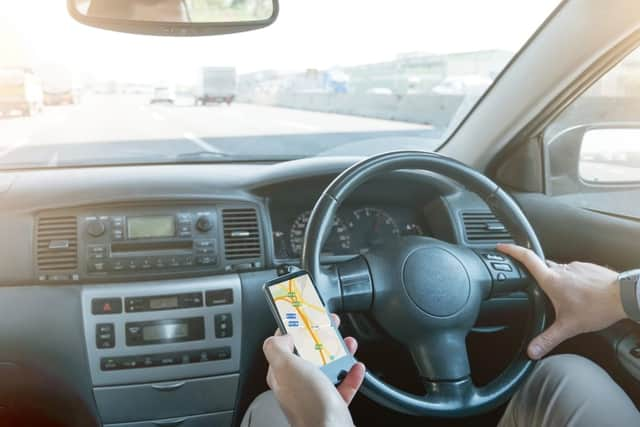New UK driving laws in 2021: the changing rules and regulations that will affect all drivers


Most drivers aren't travelling far at the minute thanks to the continuing lockdown restrictions but that doesn't mean the rules around driving are standing still.
2021 is set to bring changes to some motoring laws and policies which will have an impact on motorists' day-to-day life.
Advertisement
Hide AdAdvertisement
Hide AdHere we've round up the most significant changes expected in the coming months.
Tighter rules on mobile phones
One of the most significant changes expected this year surrounds the use of a mobile phone while driving.


Currently you can only be charged if you are using a phone for “interactive communication” such as making a call or sending a text message.
Under planned changes to the law drivers will effectively be banned from touching their phone for any purpose while driving, including any offline use such as scrolling through playlists or taking photos.
Driving in Europe
Advertisement
Hide AdAdvertisement
Hide AdIt doesn’t look like many of us will be enjoying holidays on the continent this year but for anyone heading abroad, Brexit has changed the rules on driving in Europe.
The end of the transition period means that you now must carry more documents with you, including a physical copy of an insurance green card, your driving licence and vehicle’s V5C logbook.
If you only have a paper licence or one issued in Gibraltar, Guernsey, Jersey or the Isle of Man you will also have to apply for one or more International Driving Permits.
Depending on your vehicle’s registration plate you may also need to use a separate GB sticker.
Advertisement
Hide AdAdvertisement
Hide AdYou can find details of the registration plate rules and all the documents you need here.


Highway Code
2021 could see revisions to the Highway Code which give priority to pedestrians and cyclists.
The DfT consulted last year on various changes to the Code, including introducing a hierarchy of road users which gives the most vulnerable priority and places more responsibility on those “who can do the greatest harm” to reduce danger to others.
The changes would include new guidance for all road users on overtaking cycles, motorbikes and horses, giving way at junctions, on using crossings and for using cycle or shared-use lanes.
Advertisement
Hide AdAdvertisement
Hide AdOther suggested additions include promoting the “Dutch reach” method of opening a car door and reminding EV drivers that they should not cause a trip hazard with charging cables.
Green number plates
Green number plates are set to become a common sight on our roads this year, following a change to the rules in late 2020.
All new electric cars registered from now on will come with a green flash on the left of their registration plates to identify them as zero-emissions vehicles. The thinking behind the new plates (which owners can opt out from) is that it makes it easier for EV drivers to benefit from local incentives such as discounted or free parking and problem-free access to low-emissions zones.


E10 petrol
By the end of this year a new type of petrol is expected to become the standard across the UK.
Advertisement
Hide AdAdvertisement
Hide AdUnder plans to cut CO2 emissions, filling stations will be required to sell E10 petrol as their standard unleaded, replacing the current E5.
The new fuel has more bioethanol in it, which produces less CO2. The Government says the switch could cut the UK’s emissions by 750,000 tonnes a year. However, the fuel reduces vehicles’ economy and can damage older vehicles.
For more details read our explainer on E10 petrol and its potential impact on motorists.
Automated Lane Keeping Systems
The UK could see the introduction of so-called “automated driving” systems on its roads later this year following a government consultation last year.
Advertisement
Hide AdAdvertisement
Hide AdThe Government wants to allow the use of automated lane keeping systems (ALKS) at up to 70mph on UK motorways as early as this spring. These theoretically can manage a car’s lane positioning without driver input and allow a driver to delegate control of the car to the system.
However, safety experts have warned that the systems are not yet sophisticated enough to be safe for use on public roads and “cannot replicate what a competent and engaged human driver can do”.
